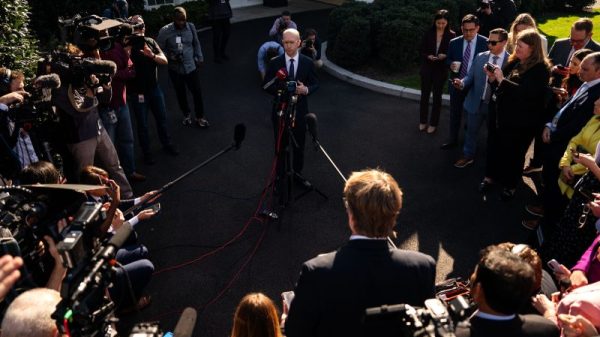What is Supply and Demand Trading Strategy
The supply and demand trading strategy is a cornerstone of price action trading. This method focuses on identifying areas where prices have historically shown significant changes, such as in demand forex trading and when markets exhibit sideways price action.
By recognizing these key zones, traders can set strategic entry and exit points, effectively placing stop loss and take profit orders.
This approach not only enhances the understanding of market movements but also maximizes potential gains by capitalizing on natural market fluctuations.
In this article, you’ll learn the basic principles of trading using supply and demand. Let’s start with the basic concepts, what supply and demand is, and how to determine the zones.
Understanding Supply and Demand Trading Strategy
Supply and demand are areas on the chart that suggest institutional parties have been buying or selling. The reasoning is that institutional players cannot enter the market by sending a single buy or sell order. In fact, the price would be much too strongly influenced.
Remember that institutional parties buy when the price falls and sell when the price rises. Although, at first glance, this may seem quite illogical, a few examples will help you see it more clearly.
What are supply and demand zones?
Supply and demand zones represent price levels where unfilled orders await execution. Banks and other financial institutions create these zones using complex algorithms to pinpoint critical supply and demand areas. Understanding these zones helps traders grasp market dynamics and make more informed decisions.
Supply Zones
These are price levels where selling interest overcomes buying pressure, often leading to a price drop. Supply zones are typically identified after a noticeable move down from a particular price range, indicating that sellers are likely to re-enter the market if prices return to this level.
Demand Zones
Conversely, demand zones are areas where buying interest is strong enough to outweigh selling pressure, resulting in a price increase. These zones are identified following a significant upward price movement from a specific range, suggesting that buyers will likely dominate if prices approach this level again.
Types Patterns Indicating Supply and Demand Zones
In trading, graph patterns showing supply and demand zones help traders identify potential entry and exit points based on the shifts in market supply and demand. Here are some common types of graph patterns that indicate these zones:
Rally-Base-Rally (RBR): This pattern indicates a demand zone. The price rallies, forms a consolidation (base) where demand exceeds supply, and then rallies again. The base serves as a key demand zone for future trades.
Drop-Base-Drop (DBD): This pattern signifies a supply zone. The price drops, forms a consolidation (base) where supply exceeds demand, and then drops again. This base acts as a critical supply zone for future price action.
Drop-Base-Rally (DBR): This pattern occurs in a downtrend but signals a potential upward reversal. The price drops to a base where buying starts to exceed selling, leading to a rally. This base becomes a demand zone.
Rally-Base-Drop (RBD): This pattern appears in an uptrend but indicates a potential downward reversal. The price rallies to a base where selling starts to exceed buying, leading to a drop. This base becomes a supply zone.
Accumulation/Distribution Phases: While not always clear-cut patterns like the ones above, accumulation and distribution phases reflect broader zones of supply and demand. Accumulation refers to a period where buyers are controlling the market, indicating a demand zone; distribution indicates sellers taking over, showing a supply zone.
How to identify supply and demand zones
Identifying market imbalances is the first step to finding areas of supply and demand. Simply put, market imbalances refer to large price swings in one direction (up or down) based on fluctuations in supply and demand.
In the graph, when demand exceeds supply, the price rises. This is represented by large green candles. When supply is greater than demand, the price falls, represented by large red candles.
identify areas of supply and demand
These large candles are actually the price movements that show us market imbalances on the chart. The key point to remember when looking for market imbalances is to keep an eye on large candles only, also known as “extended range candles” (ERC).
Now that you can easily find market imbalances on the chart, you can follow three essential steps to identify supply and demand zones.
Step 1: Locate the current price
First, you need to spot the current price on the chart. In general, supply areas show upward movements, and demand areas show downward movements.
Step 2: Find the ERCs
Now focus on the left area of the chart to find the ERCs. You can identify these candles by their long bodies with few or no wicks. Remember, if a candle has equal wick and body sizes, it is not an ERC.
Step 3: Identify the start of the price movement
Finally, you need to identify the start of the price movement on the chart. In the graphs, the price generally rises with small candles, pauses for a while, and then drops down by two ERCs. This is the origin we need to form the basis of the supply zone. This base will help us draw the area.
How to spot strong zones of supply and demand
When trading using supply and demand zones, it’s crucial to differentiate between strong and weak signals. A strong signal suggests a high probability of success for a trading setup, while a weak signal indicates a lower chance of success and might not be worth pursuing.
For optimal trading results, focus solely on strong signals. The ideal setup for a bid and ask trade should have all these characteristics:
Narrow Price Range: A narrow trading range shows a clear balance between supply and demand, making it an ideal area for trading. In contrast, a wide range with many long-wick candles suggests uncertainty and is less likely to indicate whale accumulation.
Less than 10 Candles: The best supply or demand zones typically consist of between 1 and 10 candles. While accumulation and distribution can take time, zones that develop over an extended period may lose potential by the time they are retested. Shorter zones are more likely to be fresh and untested, offering excellent opportunities for traders.
Strong Price Movement: Look for a breakout candle characterized by an extended range, indicating significant price movement. A minor movement might not be sufficient to support a profitable trade.
Fresh/Untested: Zones that have not been revisited since their formation are prime trading spots. The more a supply or demand zone is tested, the more likely it is to break down, similar to support and resistance areas. Fresh, untested zones represent superior trading opportunities because the price has not yet had the chance to retest and weaken the area.
Fakeout or “Spring”: This occurs when the price briefly breaks in the opposite direction but quickly reverses, often seen as “stop hunting” by large players seeking additional liquidity for their accumulation or distribution. A “fakeout” or “spring” is a strong indication that a supply or demand zone is about to be breached, and traders should be prepared to act on it.
The best indicators of supply and demand trading strategy
Several indicators can help traders identify the best supply and demand zones in the financial markets. Here are some of the most effective ones:
Volume Profile: This indicator shows the trading activity over a specific price level during a defined period. High volume levels often indicate strong supply or demand zones.
Order Book: Real-time order books provide insight into active buy and sell orders at different price levels. Areas with a high concentration of orders can signal potential supply or demand zones.
Fibonacci Retracement: Traders use Fibonacci levels to identify potential reversal points that often correspond to supply or demand zones. These levels often act as support or resistance.
Moving Averages: These can indicate trend direction and highlight potential reversal zones when the price interacts with a moving average line.
Price Oscillators: Tools like the Relative Strength Index (RSI) or Stochastic Oscillator can show overbought or oversold conditions, hinting at potential reversals and underlying supply or demand zones.
Candlestick Patterns: Certain patterns, like pin bars or engulfing candles, can indicate strong buying or selling pressure at specific price levels, suggesting supply or demand zones.
Pivot Point: Traders often use pivot points to identify supply and demand areas. They calculate these technical indicators by averaging the high, low, and closing prices from the previous trading day. Pivot points help pinpoint support and resistance levels as well as supply and demand zones.
Support and Resistance Levels: Support levels are prices where an asset’s downward movement halts because demand increases. Resistance levels are prices where an asset’s upward movement stops and reverses due to selling. By recognizing these levels, traders can better understand supply and demand in forex market chart patterns and determine optimal times to enter or exit trades.
Importance of oscillators and volume indicators
In supply and demand trading strategy using oscillators and volume indicators is crucial.
Traders use trading oscillators and volume indicators as essential tools to confirm trends and potential reversal points in price patterns. These tools provide objective measures of a trend’s direction and strength, assisting traders in identifying periods of consolidation and trending.
Oscillators are indicators that convert the theoretically infinite range of market price action into more manageable limits. They usually offer buy or sell signals, giving traders insight into the market’s momentum. Popular examples of oscillators include the Relative Strength Index (RSI) and the Moving Average Convergence Divergence (MACD).
On the other hand, volume indicators help gauge the strength of a market move. High volume levels often suggest a strong, sustainable price move, while low volume levels typically point to weak movements that might reverse.
Best Supply and Demand Trading Strategy
When it comes to forex trading strategies based on supply and demand, you have several options to choose from that can be effective in identifying trading opportunities. Here are some of the most popular strategies:
Range Trading Strategy
If you have identified your supply and demand zones, you can use a range trading strategy. To do this, many traders rely on stochastic indicators to identify overbought and oversold trends in the market. Range trading is a non-directional trade that allows you to identify long and short entries in the forex market. After observing all conditions on a long-term chart, traders can zoom in on a shorter-term frame to spot the perfect entry.
Breakup strategy
Since prices are constantly fluctuating in the forex market, traders often look for ways to enter the market under favorable conditions, for example in the direction of a breakout, as this could be the start of a trend.
Risk management strategy
Supply and demand zones work in the same way as support and resistance levels, providing the trader with information on where to place their trades. Traders can implement different strategies depending on their risk tolerance.
Traders who sell into the supply zone can set stops above the supply zone and target the demand zone. Conservative traders can aim above the demand zone and formulate various risk management techniques.
Supply and demand trading strategy – useful tips
Here are some best practices for trading with supply and demand zones:
Always place stop-loss orders to protect yourself from unexpected market movements.
Combine other indicators with supply and demand zones to validate your analysis.
Stay alert to news about significant economic or political events that could affect the market.
Practice patience and discipline. Wait until the price reaches the supply or demand zone and confirms your signals before you enter a trade.
Factors influencing supply and demand trading strategy
There are a large number of factors that can affect supply and demand, and these vary from market to market. But the basic principle remains the same: when demand exceeds supply, prices rise, and when supply exceeds demand, prices fall.
Let’s take the example of stocks. If demand for a company’s shares increases without the number of shares outstanding increasing, its price will increase, and if the number of shares outstanding increases without increasing demand, its price will fall.
If we consider the foreign exchange market instead, the exchange rate between two currencies is the representation of the demand and supply of a particular currency in relation to another currency. For example, in the GBP/USD pair, if the demand for the British pound increases, the value of the pair increases because it takes more US dollars to buy a single pound.
The key difference is that rising prices do not necessarily deter investors. Many financial markets are based on speculation, which can drive up prices.
We see this in speculative bubbles, where the price rises well beyond the intrinsic value of the asset, and in blue-chip stocks that are considered expensive for most investors.
Each financial market has different factors that influence supply and demand. Let’s take a few examples.
Supply and Demand Trading Strategy in the Stock Market
Factors that influence supply:
Stock issues – when a company increases the supply of its stock through new stock issues and stock dividends.
Stock repurchases – when a company reduces the supply of its shares through repurchase or delisting programs.
Factors that influence demand:
Economic data: If an economy outperforms expectations, it creates demand for stocks because it is convinced that they will generate higher income. Economic data releases can provide key information about a country’s performance.
Interest rates: When interest rates fall, demand for stocks increases as investors look for other ways to earn capital rather than storing cash in savings accounts.
Earnings: Positive earnings boost investor sentiment toward a stock, while negative or lower-than-expected earnings can lead to bearish sentiment.
Supply and Demand Factors in the Foreign Exchange Market
Factors that influence supply in the foreign exchange market:
Demand for imports: When domestic demand for imports increases, the domestic currency will be sold to buy foreign currencies. The more imports, the greater the supply of books on the foreign exchange markets.
Central bank policy: When central banks reduce bank reserve requirements, they can lend more money to consumers, which increases the money supply. This usually leads to lower interest rates and increased investment.
Factors that influence demand in the foreign exchange market:
Inflation rates: A high inflation rate reduces the demand for foreign exchange because it means that domestic goods increase in price relative to international goods. The currency becomes less competitive and less attractive.
Interest rate: The higher the interest rate on returns, the greater the profit. Forex traders therefore tend to buy currencies with higher interest rates, while purchasing currencies with lower interest rates. When the bans
Why use supply and demand trading strategy in Forex?
Supply and demand are areas of the chart that indicate that the market is largely assuming that institutional parties have bought or sold.
Indeed, institutional players cannot enter the market by sending a buy or sell order. Also remember that institutional parties buy when the price falls and sell when the price rises.
Although this may seem illogical, we explain the reasoning to you using a few examples. When the price increases and suddenly it plunges sharply, then according to the law of supply and demand, the sellers were stronger than the buyers at that time.
The reversal of a trend requires numerous orders and large sums; this situation can only be explained by the entry of large institutional investors. According to the law of supply and demand, it is impossible for institutional parties to fill all orders in one move.
This is why the price often returns to its level in many cases. This is an opportunity for individuals to seize to ride the wave without the knowledge of institutional investors.
The post What is Supply and Demand Trading Strategy appeared first on FinanceBrokerage.




























